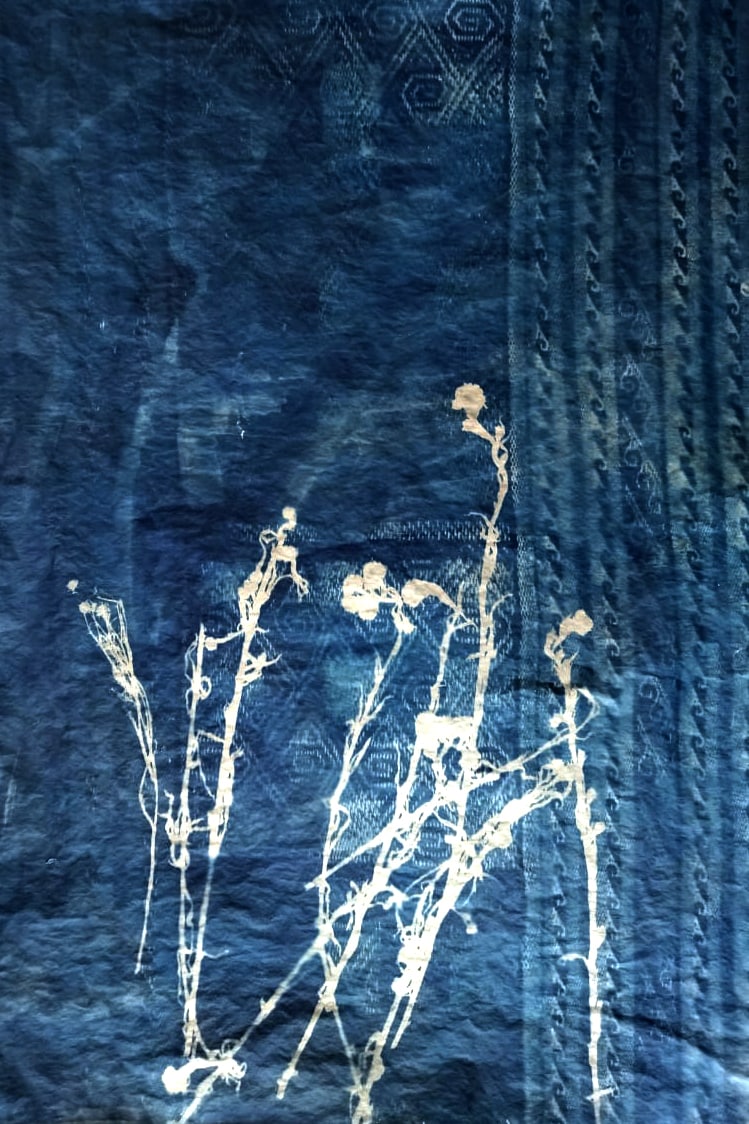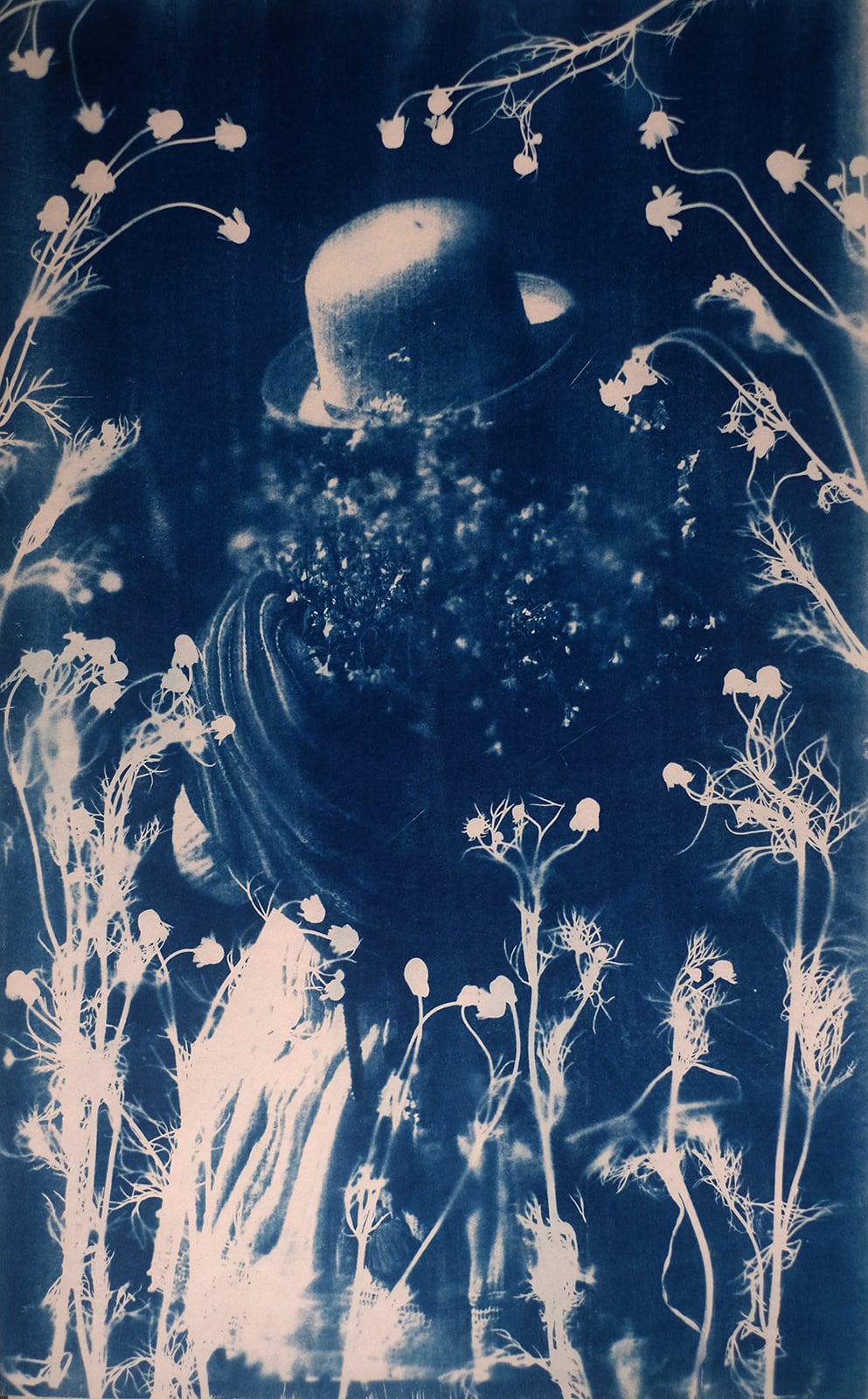
The art of registering the aura of plants
Wara Vargas feels the tranquility of living in the Andean world, where it is recognized that mind and body are united and that sorrows can hurt health. It calms her to have rituals. She values them. Because they take care of the ajayu, the soul, she is sure that plants also have and therefore sought to record them, with the cyanotype technique and the memory of Anna Atkins, English botanist and first woman photographer in the world.
Wara studied Social Communication and specialized in Press Photography at the José Martí International Journalism Institute in Cuba. She has worked in the Bolivian media, won awards, and exhibited her work in several countries, such as Brazil, Uruguay, Mexico, Italy, Germany, the United States, Colombia, and Spain. She is part of Ruda, a collective of eleven Latin American women photographers.
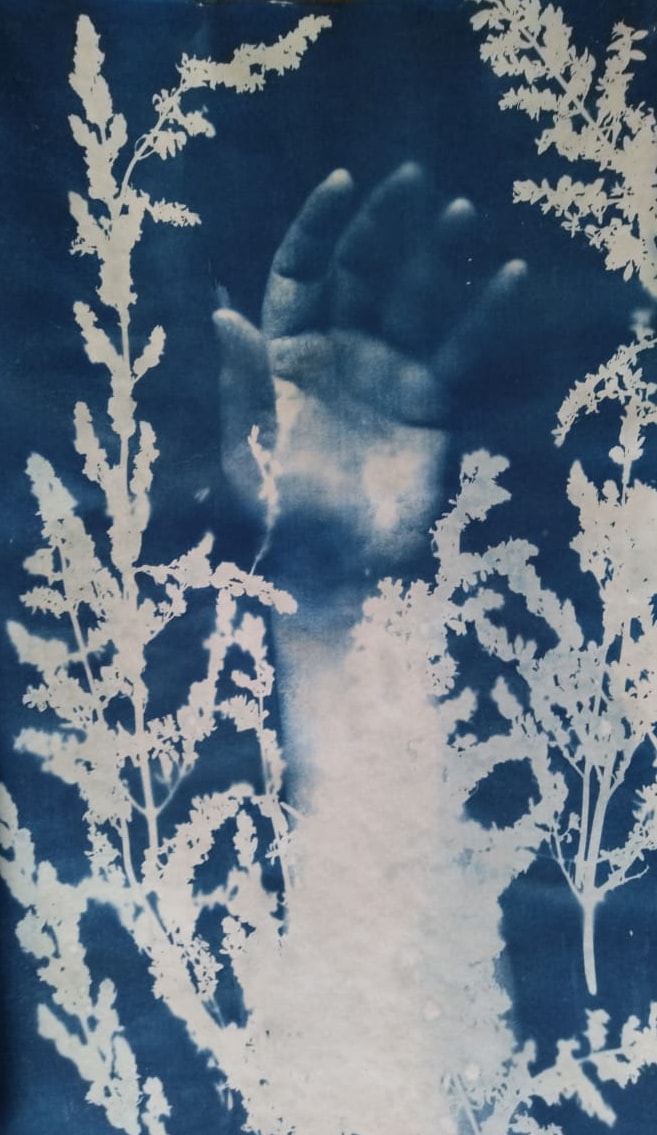
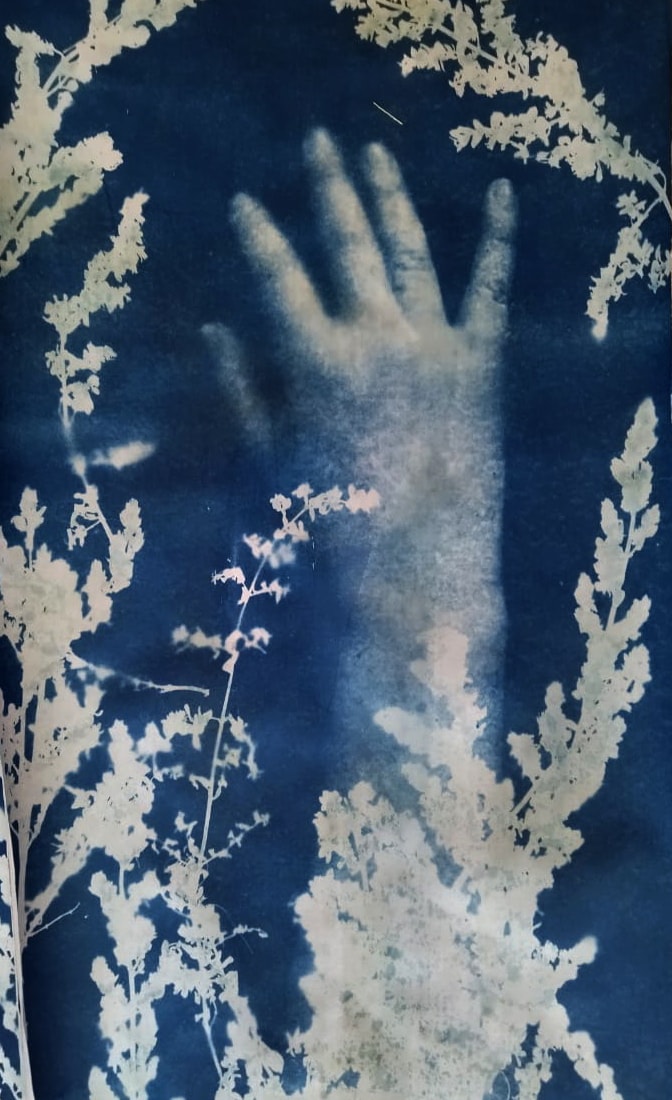
How was the idea born?
It was a project that arose from Mayra Gamarro’s invitation to a conversation with an artist from Brazil who had been portraying women who work with herbs. I understood it was good to talk about medicinal plants and compare them with Brazil to know if the territorial context had something to do with it. Some plants do not exist in Brazil, and here they do because they are Andean. There are different uses of plants in the two territories. That is how we started this journey.
Anna Atkins was a woman who died without knowing she was a photographer. In the beginning of photography, there was not a man. It was a woman. She was a biologist, and it is not that she discovered the cyanotype technique, but she did use it to make a record of algae. She, as a biologist, drew the plants, which was how they were recorded then. When she came across this technique, she made a book about algae. There are two copies of this book, which are not identical but cyanotypes. Each piece is unique.
She did emulsify with a chemical that is diluted into separate parts. Putting them together in equal portions makes them light-sensitive when it dries. She emulsified papers with this chemical. It dries in a dark room, and they are already light-sensitive. When they came out in the light, she would put the seedling on this emulsified and sensitive paper and then put them in the sun. It is developed with water. It’s a super gentle technique.
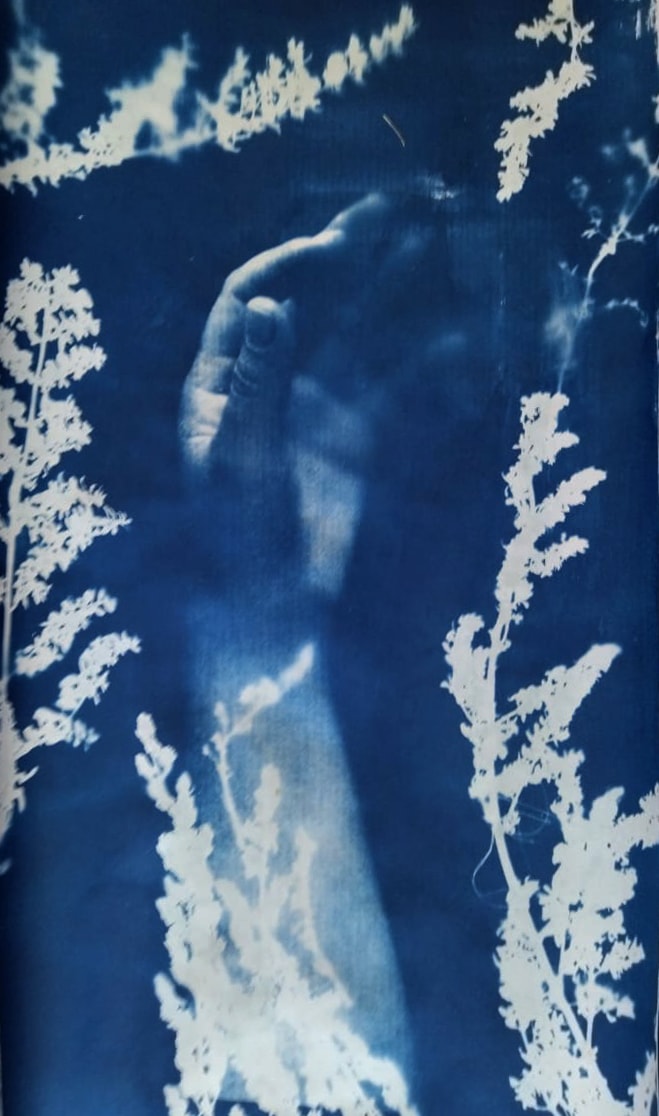
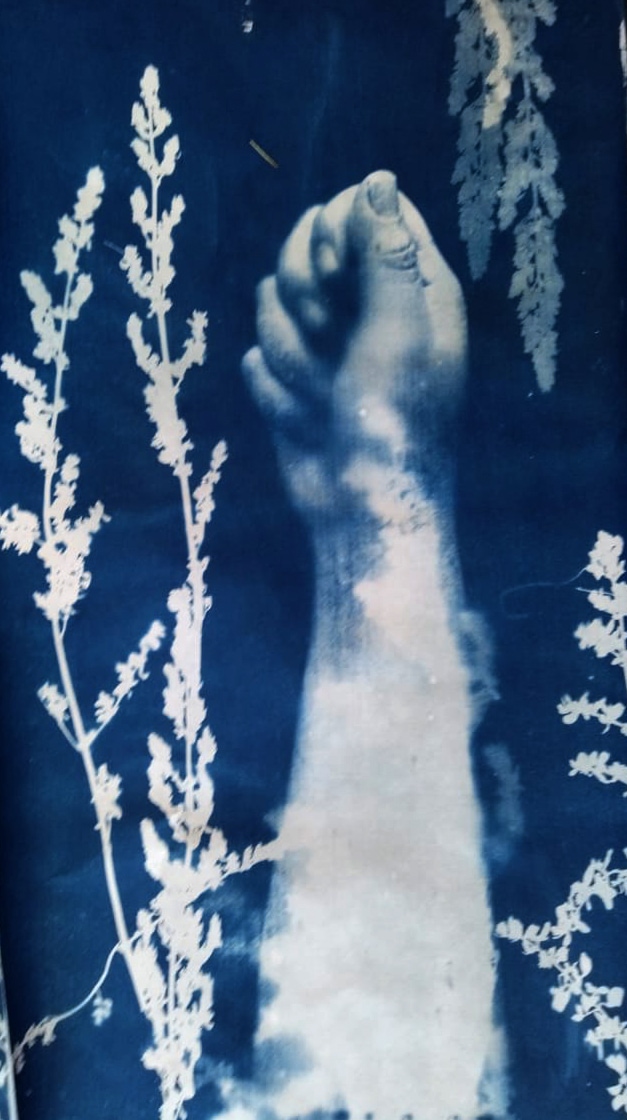
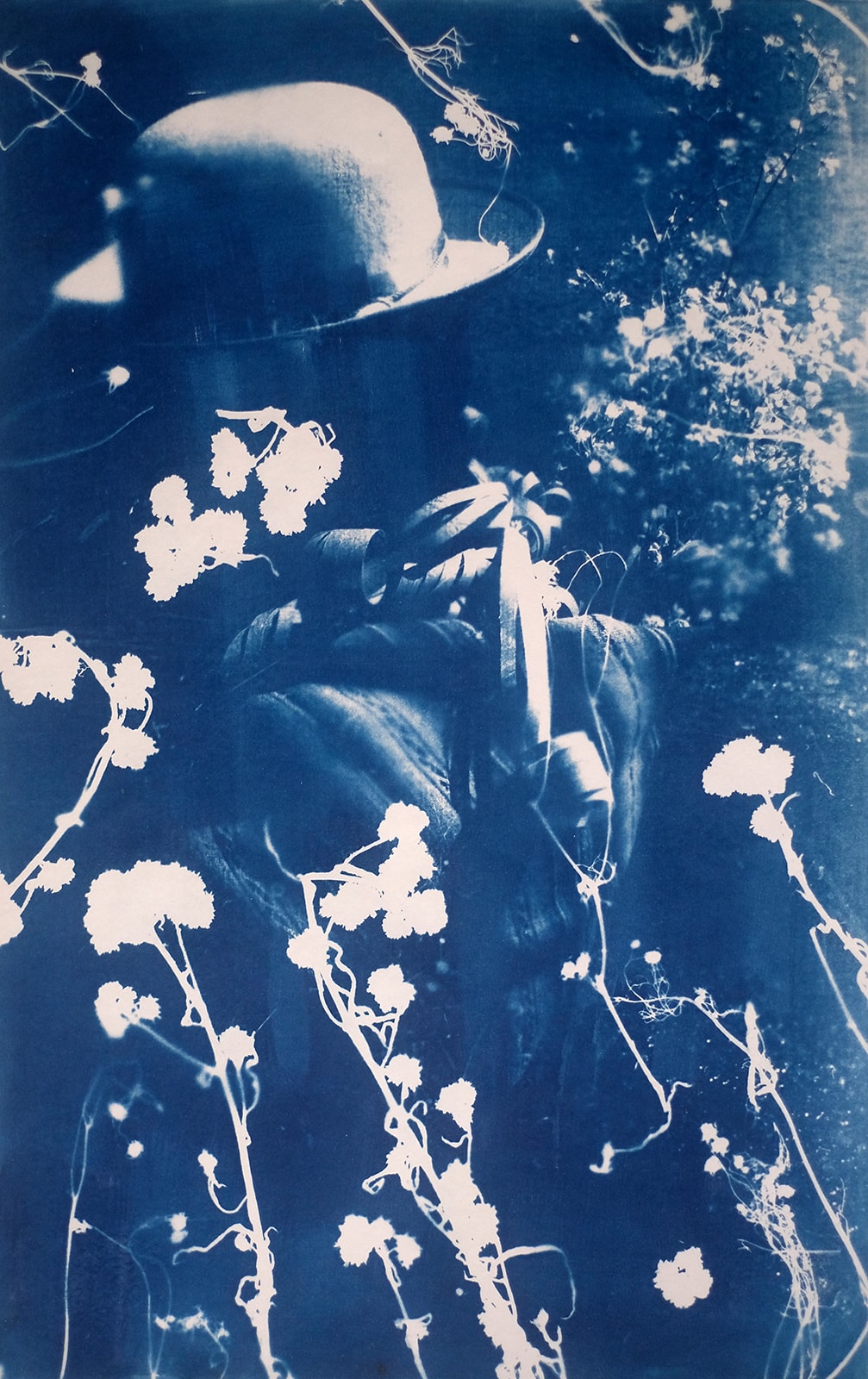
What does the name of the series mean?
Ajayu is what we call the soul here. For me, it was like recording the aura of the plants. I used this technique. I did four 60 by 50 pieces, the largest I’ve ever done in cyanotype because I wanted to get bigger plants in. The idea was that the plant would be marked. I worked with two layers.
The photos are of kallawayas, people who work with plants. They know about healing plants.
Who are in the photographs?
There are male kallawayas and female kallawayas, they heal with plants.
In some photos, I intervene kallawayas images with some plants. Others are Andean women with aguayos. I have tried to merge the plants of Andean women and Kallawaya women. We started with six. Some complicated things happened in my life, and I understood the healing ritual.
The plant is taken in an infusion, but there is a much deeper ritual of healing in Bolivia. Many traditions talk about the body getting sick when grief or fear comes to them. There are many rituals against fear. As a child, my grandmother used to say to me: “Come, come, come.” I understood this by working with the Kallaguayas. They call Ajayu, because when you get scared Ajayu leaves your body. So you have to call it. Because if you are without Ajayu, you get sick. There are some illnesses that you don’t know what they are.
I liked these rituals to bring back your ajayu and for grief. Grief is a disease that causes other diseases. There are rituals for grief, with prayers in Quechua or offerings to the Pachamama to cure your grief.
